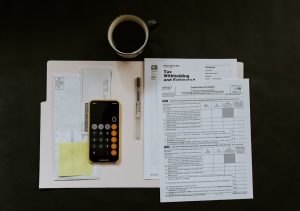How to Choose the Right Forex Indicators to Download for Your Trading Strategy
In the world of forex trading, indicators play a crucial role in helping traders make informed decisions. These indicators are powerful tools that analyze historical data and provide insights into market trends, price movements, and potential entry and exit points. However, with the abundance of indicators available on the internet, it can be overwhelming for traders to choose the right ones for their trading strategy. In this article, we will discuss some key factors to consider when selecting forex indicators to download.
1. Understand Your Trading Strategy
Before delving into the world of indicators, it is essential to have a clear understanding of your trading strategy. Are you a day trader or a long-term investor? Do you prefer trend following or mean reversion strategies? Knowing your trading style will help you narrow down the list of indicators that are most relevant to your approach.
For example, if you are a trend follower, indicators like moving averages, Ichimoku cloud, or parabolic SAR can be useful. On the other hand, if you prefer mean reversion strategies, indicators like Bollinger Bands or RSI (Relative Strength Index) might be more suitable.
2. Consider Your Trading Timeframe
The timeframe you trade on also plays a significant role in selecting indicators. Different indicators perform better on certain timeframes, so it is crucial to choose ones that align with your trading timeframe.
For instance, if you are a short-term trader focusing on intraday charts, indicators like stochastic oscillator or MACD (Moving Average Convergence Divergence) can provide valuable signals. Conversely, if you are a swing trader operating on daily or weekly charts, indicators like ADX (Average Directional Index) or Fibonacci retracement levels might be more appropriate.
3. Evaluate Indicator’s Accuracy and Reliability
When selecting indicators, it is vital to assess their accuracy and reliability. While no indicator is 100% accurate, some are more reliable than others. Look for indicators that have proven track records and are widely used and respected by the forex trading community.
To evaluate an indicator’s accuracy, consider backtesting it using historical data. This will allow you to see how well the indicator performed in the past and whether it aligns with your trading strategy. Additionally, read reviews and gather feedback from other traders to gauge the indicator’s effectiveness.
4. Avoid Overloading Your Charts
It can be tempting to download and use multiple indicators simultaneously, believing that more indicators will lead to better trading decisions. However, this can lead to information overload and confusion. It is crucial to strike a balance between having enough indicators to provide valuable insights while keeping your charts clean and uncluttered.
Consider selecting a few key indicators that complement each other and provide different perspectives on the market. This will help you make more informed decisions without overwhelming your analysis.
5. Customize Indicators to Fit Your Strategy
Once you have selected the indicators that align with your trading strategy, it is essential to customize them to suit your specific needs. Most indicators come with default settings, but these settings may not be optimal for your trading style.
Experiment with different settings and parameters to find the values that work best for you. This process of customization will help you fine-tune the indicators to generate more accurate signals and reduce false positives.
In conclusion, selecting the right forex indicators for your trading strategy is a crucial step towards becoming a successful trader. By understanding your trading strategy, considering your trading timeframe, evaluating accuracy and reliability, avoiding chart overload, and customizing indicators, you can enhance your trading decisions and increase your chances of success. Remember that indicators are just tools, and it is essential to combine them with other factors like risk management and fundamental analysis for a well-rounded trading approach.






